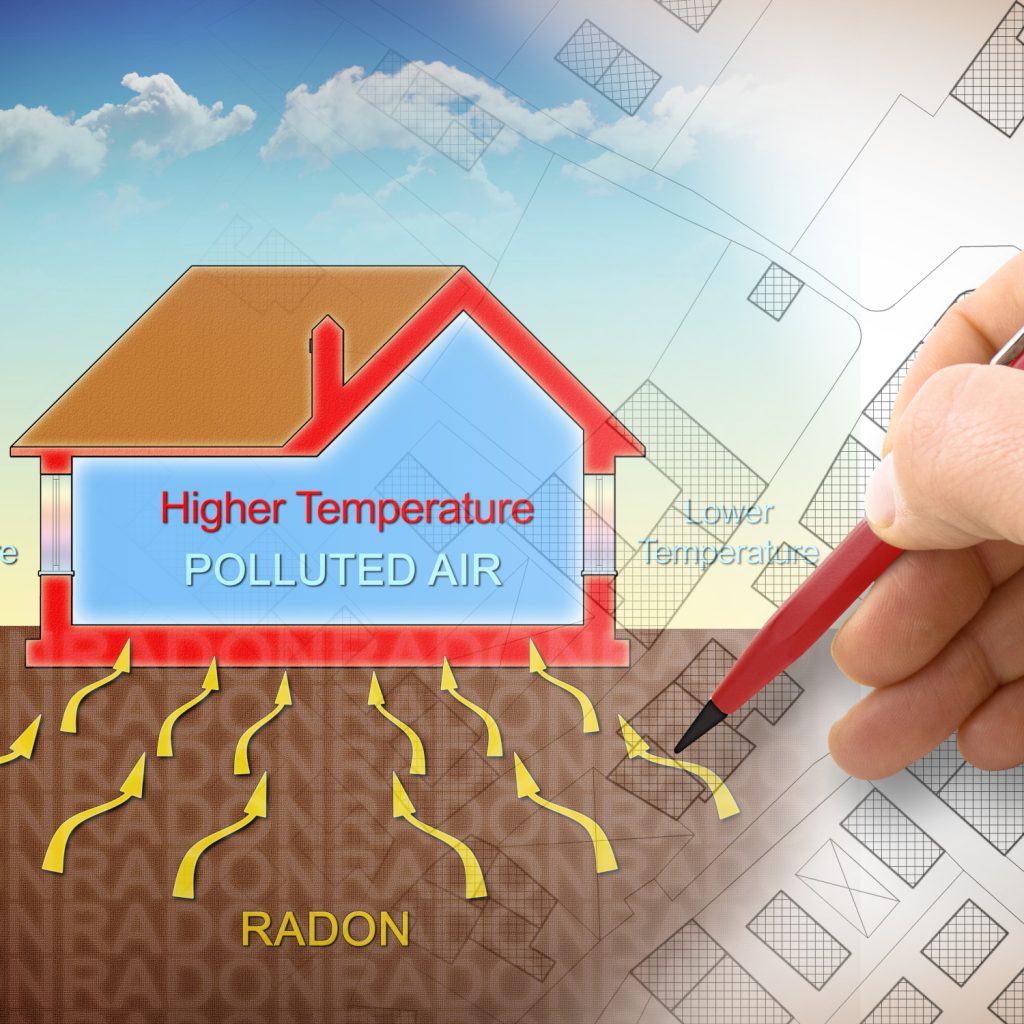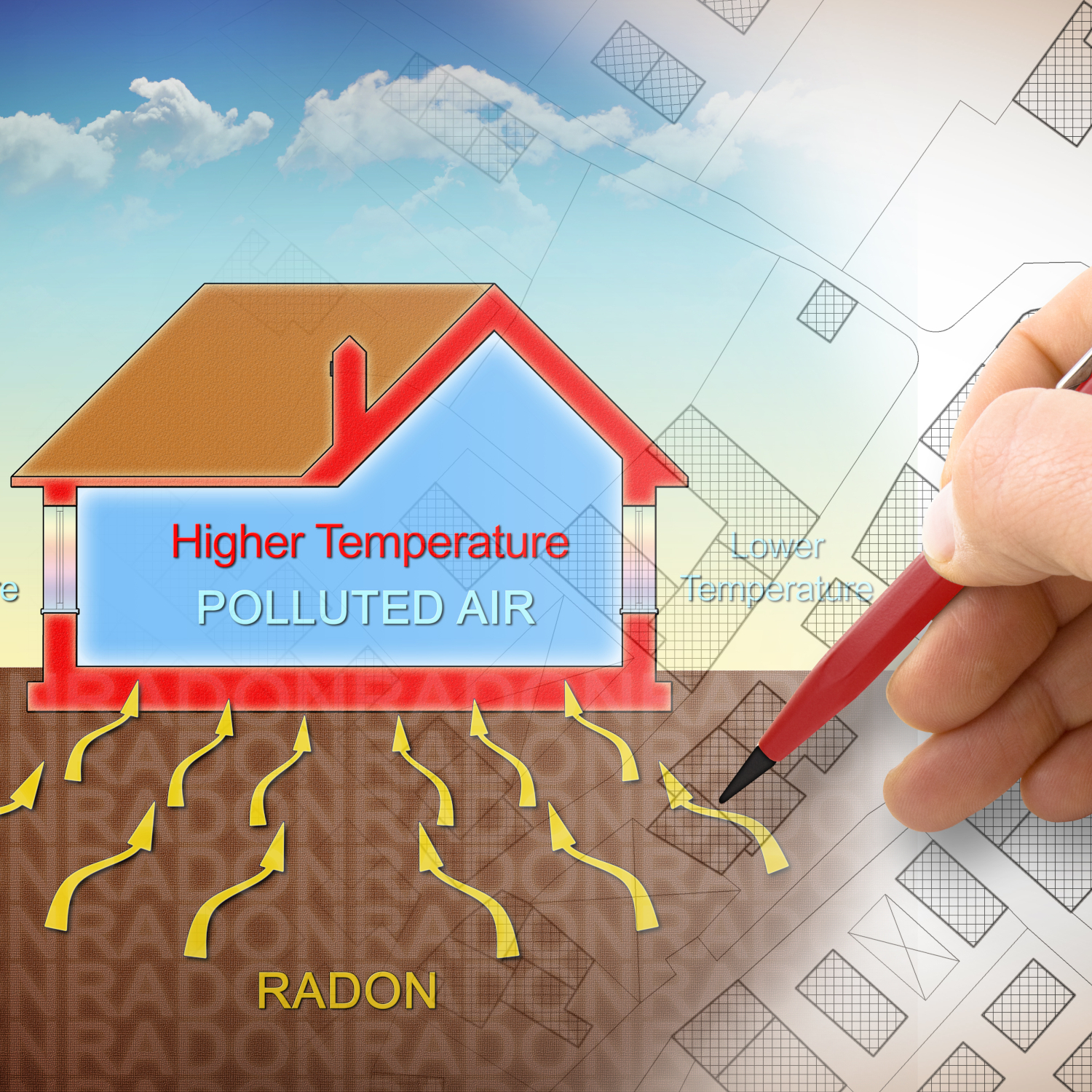
How Radon enters the home
To understand how radon systems work, we must first understand how radon enters a home. Radon is a noble gas and as such, it doesn’t react or form chemical bonds or other elements and remains very small….small enough to find its way through the pores in concrete. Radon is also very heavy, heavier than an atom of lead, so it wants to remain low to the ground. So how does this heavy element get into a house? It is pulled in by the house.
Every house is under a vacuum, or better acts like a vacuum. Air in the house warms up, and of course, warm air rises, traveling from the basement to the first, and second floor, into the attic, and finally through the attic vents. This is called the “stack effect.” This air exiting the house needs to be replaced and a major source of this air is the soil under the home. So radon is being pulled into the house by the stack effect. This also explains why radon levels fluctuate so much; small changes in the temperature of the air inside and outside, differences in the barometric pressure outside, and even the furnace heating or cooling the home’s air, all affect the radon levels.
So now we know how radon enters the home. How can we stop it? Easily. We create a similar or bigger vacuum under the foundation. The first step is to seal the major entry points like large cracks in the floor, drains without water traps, and the sump pit. Sealing alone is not enough, though. Radon is still small enough to come right up through the concrete. So the second step is to draw air from under the foundation and vent it outside: A hole is drilled through the floor and some material removed. Then, a pipe system and fan is installed to move the air outside where radon can disperse into the larger atmosphere. With the fan pulling air from under the slab, a vacuum is created and the home’s pressure is balanced with air pressure under the basement slab, preventing radon from being drawn up into the house! At the same time the fan is pulling some of the radon out, it is all pulling a lot of humidity and other ground gasses as well, so it is important to vent the system properly so there is no re-entry into the house or water damage from humid air.


